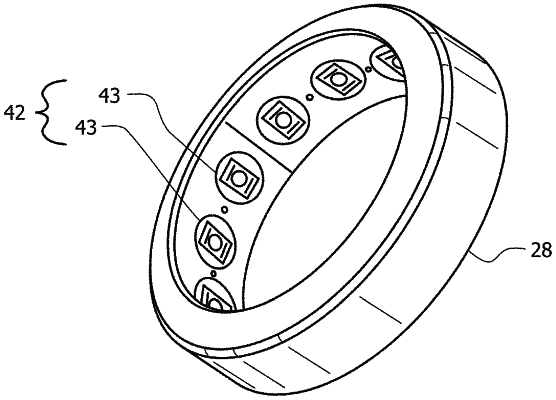| CPC G06F 3/016 (2013.01) [G06F 3/038 (2013.01); G06Q 20/3224 (2013.01); G06Q 30/0639 (2013.01); G06F 2203/0331 (2013.01); G06N 20/00 (2019.01); G06Q 20/321 (2020.05); G06Q 20/36 (2013.01); G09B 9/00 (2013.01); G16H 40/67 (2018.01)] | 18 Claims |

|
1. A sensory augmentation system, comprising:
a first electro-tactile stimulator, wherein the first electro-tactile stimulator comprises a ring having a continuous and unchangeable annular structure for wear on a finger of a user, wherein a diameter of the annular structure is determined based on a diameter of the finger, the first electro-tactile stimulator comprising:
an array of user interaction elements disposed linearly and equidistantly around an interior surface of the ring and driven by a driver and contactable to a human body to provide stimulation having a first stimulation waveform; and
a signal generation and sensing processor configured to receive data corresponding to information to be communicated to the user,
wherein the signal generation and sensing processor generates a first instruction to the driver, the first instruction corresponding to the first stimulation waveform, and
wherein the driver generates the stimulation having the first stimulation waveform in response to the first instruction.
|